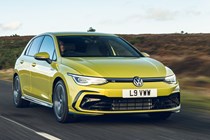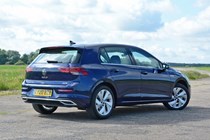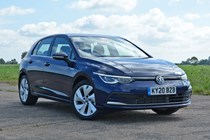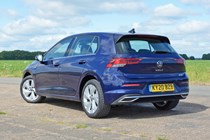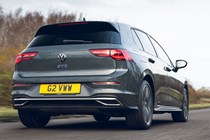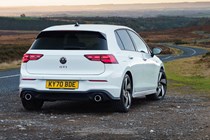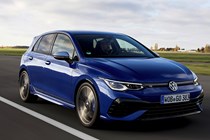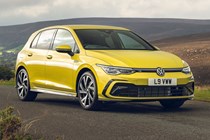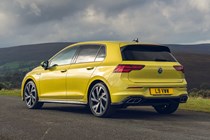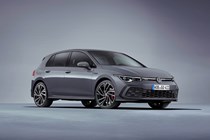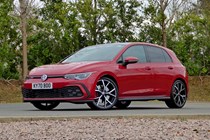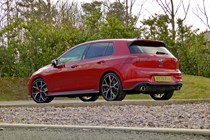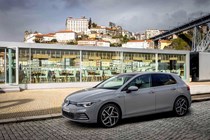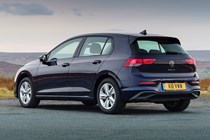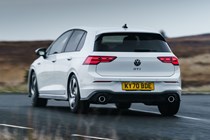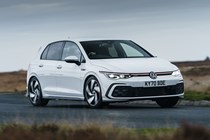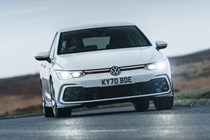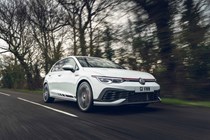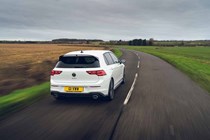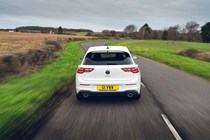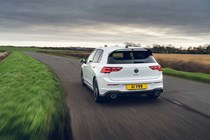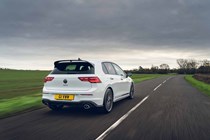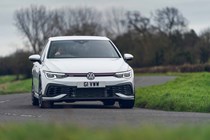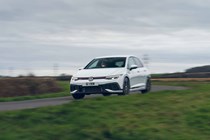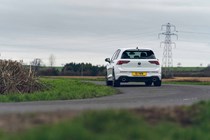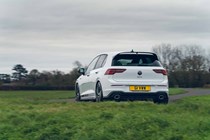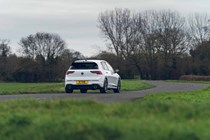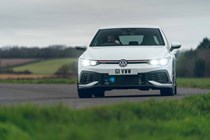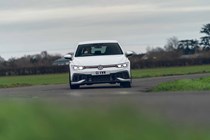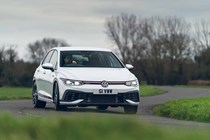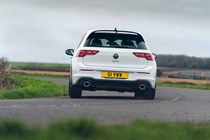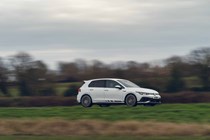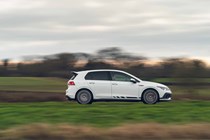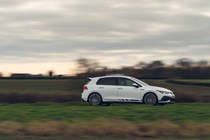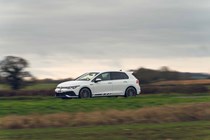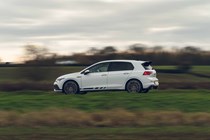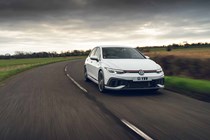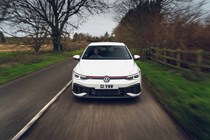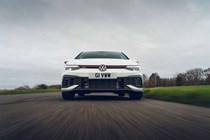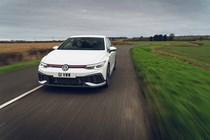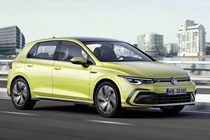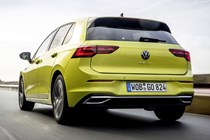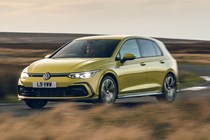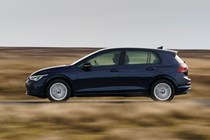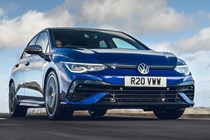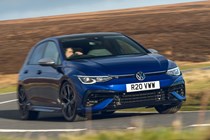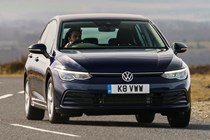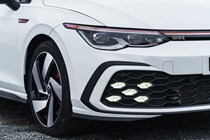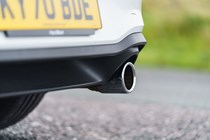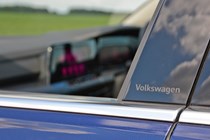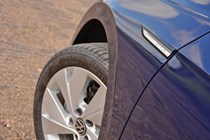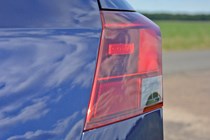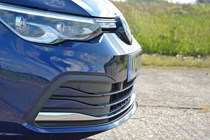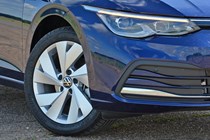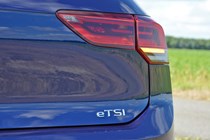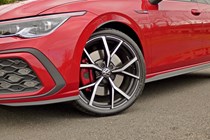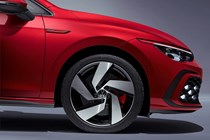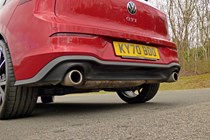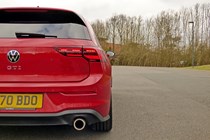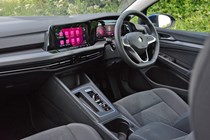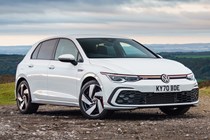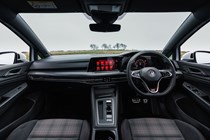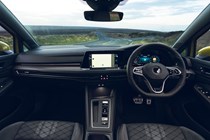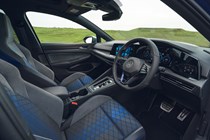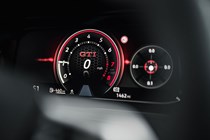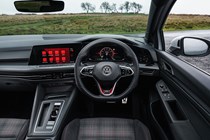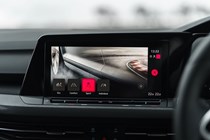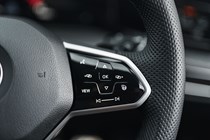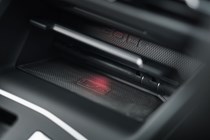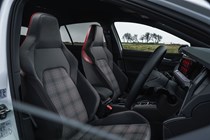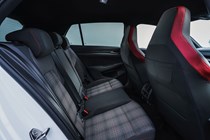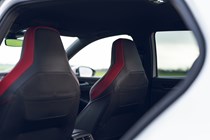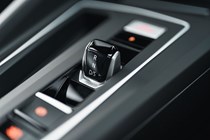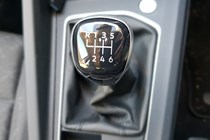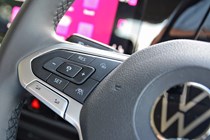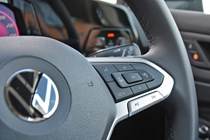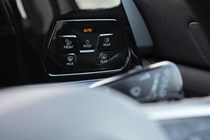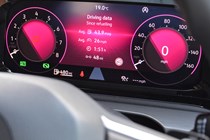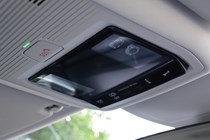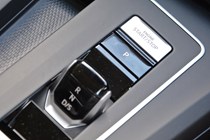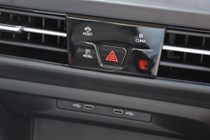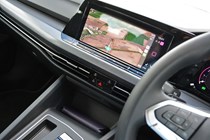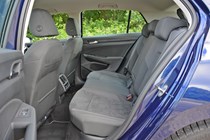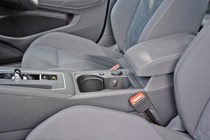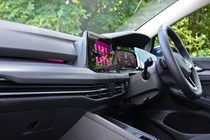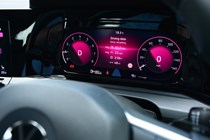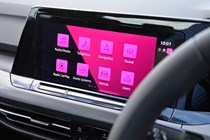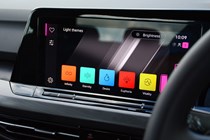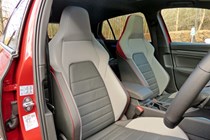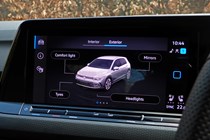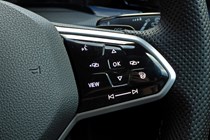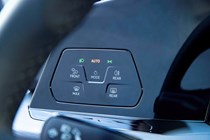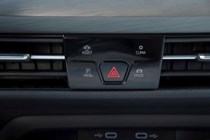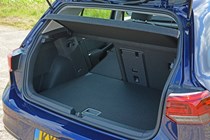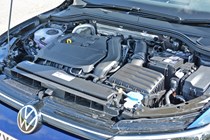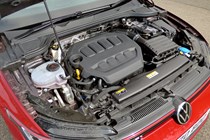
Volkswagen Golf engines, drive and performance
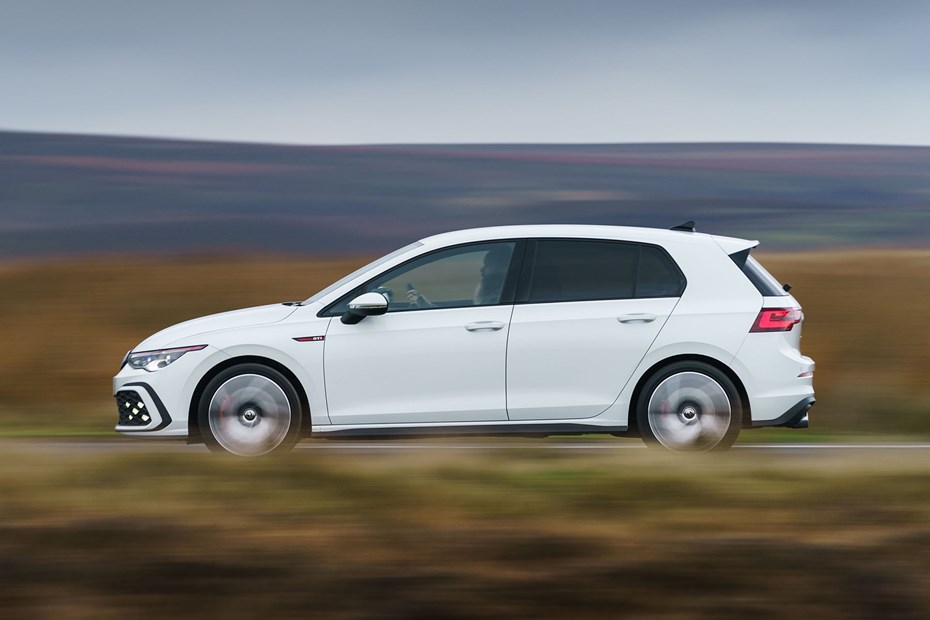
- Golf Mk8 has an enormous range of engines
- Petrols, diesels and hybrids
- Performance versions come in several flavours
Petrol engines
There are three TSI-badged petrol engines you can choose from, all with a six-speed manual as standard. The 1.5 TSI is set to be the biggest seller, and we found it to be powerful enough with well-insulated engine noise unless pushed hard, at which point it becomes a bit coarse.
In addition to the regular petrol range is a 48-volt mild-hybrid version of each of the petrols, badged eTSI, available only with a seven-speed dual-clutch DSG gearbox. We suspect these variants will remain and the non-eTSI engine will be phased out over time. This drivetrain uses a special starter-generator and a 48v lithium-ion battery charged by regenerative braking in order to enable the Golf to coast with the engine off to save fuel.
We found it felt slightly sprightlier than the standard TSI, especially when pulling away where there’s a grin-inducing burst of electrical assistance, and quite punchy on a twisty country road. The only problem really was the slightly sleepy nature of the standard-fit DSG, which took a while to shift, particularly on the way down its gears. You can, of course, change gears manually using the steering wheel paddles.
We would only recommend the 1.0-litre if you rarely venture outside of a city, as its performance is a little lacklustre on the motorway. Other than that, if you can’t find a Golf for you, you’re not trying hard enough.
Diesel engines
A new 2.0-litre TDI has been designed ‘from scratch’ says Volkswagen. Both diesel versions feel relaxingly flexible for daily use – and thanks to an easy 70mpg on longer runs, it has a 600-mile-plus range. That makes the punchier TDI 150 especially a great choice for motorway miles.
The lower output TDI is a pleasant-enough car to drive and impresses with its relaxed high-speed cruising ability and low noise levels. With 115hp it doesn’t accelerate at all briskly, but it rarely feels out of its depth, covering long distances happily on the motorway, unaffected by inclines when fully loaded. If you’re wanting instant overtaking punch on A-roads, we’d recommend the higher-powered 150hp version, though.
In fact, in a lot of ways the TDI 150 is all the Golf you need – linear in power delivery, torquey, reasonably quick with a 0-62mph time of 8.8 seconds. It’s quiet, too, helped by the fact it doesn’t need to be worked as hard as its lower powered brother.
We’ve tried the six-speed manual transmission in the 2.0TDI (115hp) model, and came away disappointed. It has a clunky, ever-so slightly obstructive change quality that does the car no favours at all. Having said that, the test car had fewer than 2,000 miles on it, and it may well ease off with more miles on it. But compared with older Golfs, which tend to have a silky-smooth change that’s light and trouble-free, we can see many buyers being put off and heading for the DSG.
Electric and hybrid engines
There are two plug-in hybrid Golfs available, the sensible eHybrid and the sporty GTE (below). Both combine a 1.4-litre petrol engine with a big battery pack and an electric motor, although the GTE gets more power. With 204hp (the same as the old GTE) the eHybrid feels strong on the road with a 0-62mph time of just 7.4sec with both power sources singing. Electric only performance is sufficient to keep up with traffic without too much stress.
Because it prioritises efficiency over performance, the eHybrid has a longer electric-only range than the GTE. At over 40 miles on a single charge according to official figures, it drops into a lower company car tax bracket than the GTE and is more efficient in the real world. As it’s also just as refined and a good bit cheaper, the eHybrid is the plug-in Golf we’d pick.
High-performance engines
Plug-in hybrid GTE
The GTE combines the fuel efficiency of a plug-in hybrid with much of the performance of a hot hatchback. Power from the petrol engine remains the same as the eHybrid, but the combined power with the electric motor equates to a total output of 245hp and 400Nm of torque, enough for 0-62mph in 6.7sec. However, it has a shorter electric-only range than the eHybrid and isn’t as much fun as a GTI.
- Read the full Volkswagen Golf GTE review
Golf GTI and Clubsport details
These are traditionally the most popular fast Golfs, and with good reason. The GTI brand has been on sale in the UK since the late 1970s and is established as the longest-running hot hatch franchise. The latest model continues the formula of a 2.0-litre turbocharged front-wheel drive model with low-key looks and excellent feel at high speeds. Maximum power of 245hp for the GTI and 300hp for the Clubsport guarantees exciting performance.
- Read the full Volkswagen Golf GTI review
Range-topping Golf R leads the way
Heading the range is the Volkswagen Golf R, which packs 320hp and four-wheel drive to go baiting the world’s best hot hatches. Like before, it’s a rung above the GTI, but lacks some of that car’s finesse and driver feel – but what an all-round weapon.
- Read the full Volkswagen Golf R review
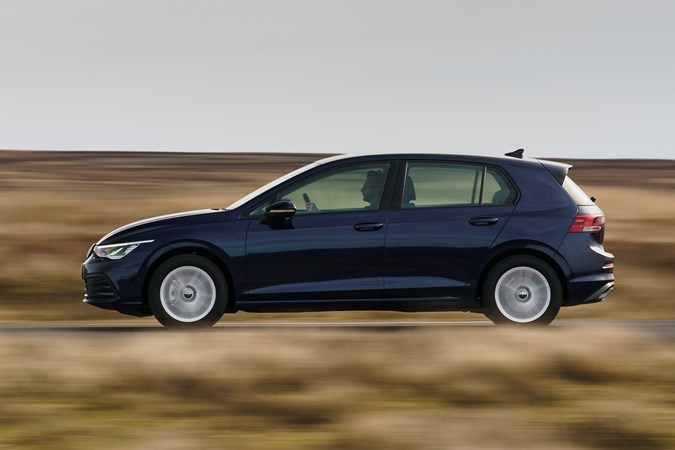
What’s it like to drive?
- Greater distinction between comfort and performance
- A very grown-up, mature-feeling car to drive
- Different rear suspension depending on price
The Golf has long been a great combination of tidy handling and a comfortable ride, something the current model does very well indeed. It’s helped by some mind-boggling tech underneath the ‘driving dynamics manager’ umbrella.
Put simply this is a system that makes the suspension (when DCC is fitted) and various traction systems talk to each other in order to avoid conflicting commands. Put even more simply, Volkswagen says the Golf will be more comfortable at one end of the scale and sharper at the other.
We can certainly recommend the entry-level Golf Life for ride comfort. That, you might think, may lead you to conclude that it’s also not so sharp in the handling department. But you’d be wrong there, and although standard Golfs are not the most involving cars to drive, lacking a little feel, this one is precise in corners and inspires lots of confidence in all weathers.
Like a great many of its competitors, the VW Golf now comes with two different rear axles depending on which version you choose. So what? Well one of them is usually quite a bit comfier and brings with it better handling – Golfs with less than 150hp and front wheel drive get a torsion beam, those with 150hp and more or with all-wheel drive get a much more sophisticated multilink set up. The multilink option is superior but it’s also more expensive, so you only get it on faster, pricier models.


